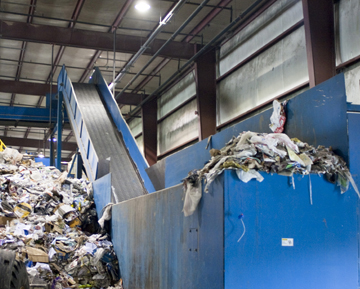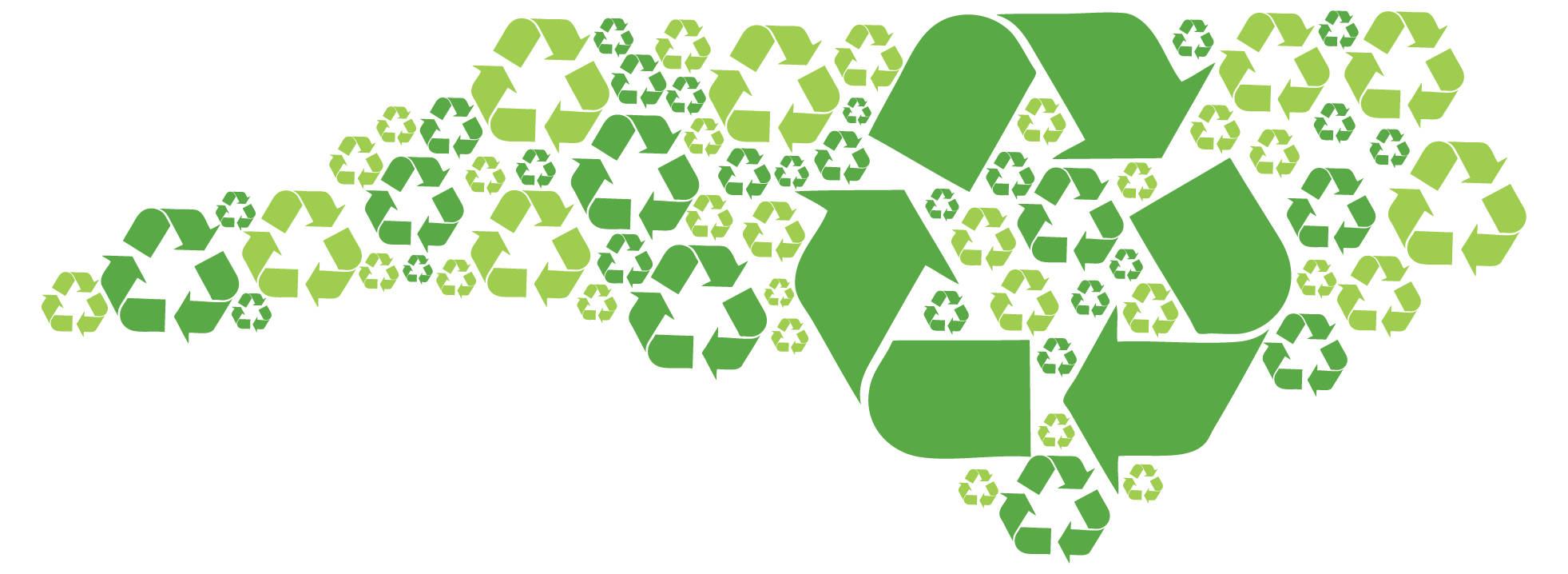Recycling Cycle
1. Common items collected for recycling
- Aluminum cans
- Clear, green, blue and brown glass
- Corrugated cardboard
- Newspaper and glossy advertising inserts
- Plastic bottles that have a neck smaller than the base
- Steel or tin cans
 2. Processing
2. Processing
- If your recyclable material is collected all mixed together (commingled), it is taken to a recycling plant where it is separated
- First, the newspaper and cardboard are separated from other recyclables using a sticky conveyor belt
- Next, a magnet separates the steel cans
- Aluminum cans are separated from other recyclables by an eddy current (a reverse magnet)
- Once the material is separated, it is sent to other factories to be made into new products.
- Newspaper and cardboard are shredded, pulped, dried and flattened into new rolls of paper
- The steel and aluminum cans are crushed, melted, and flattened into sheets of metal.
- The glass pieces are crushed, melted and remolded into new bottles or jars
- Plastic bottles are chipped, melted, and remolded
- You can buy school supplies made from recycled materials such as backpacks and rulers made from recycled plastic.
- aluminum cans can be remade into new cans, they can also become lawn furniture or gutters.
- Corrugated cardboard and newspaper can become pens, pencils, paper, cereal boxes or insulation.
- Glass can be recycled into new bottles, jars or even tiles.
- Plastic bottles can be made into new soda bottles, picnic tables, carpet and clothing.
- Steel cans can be made into bikes, nails or even cars.
- Tires can be made into bulletin boards, floor mats, mulch, soaker hoses or shoe soles.

